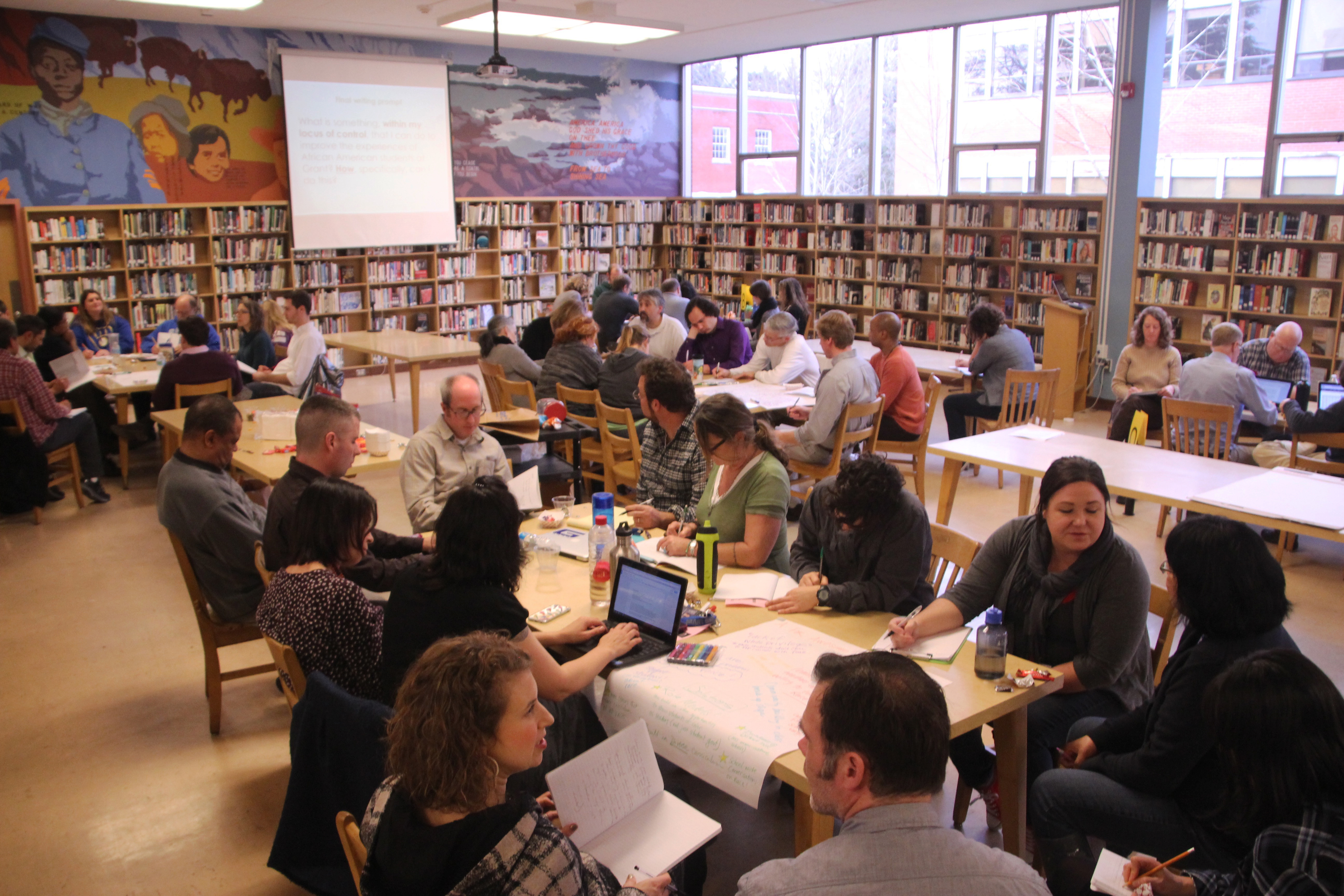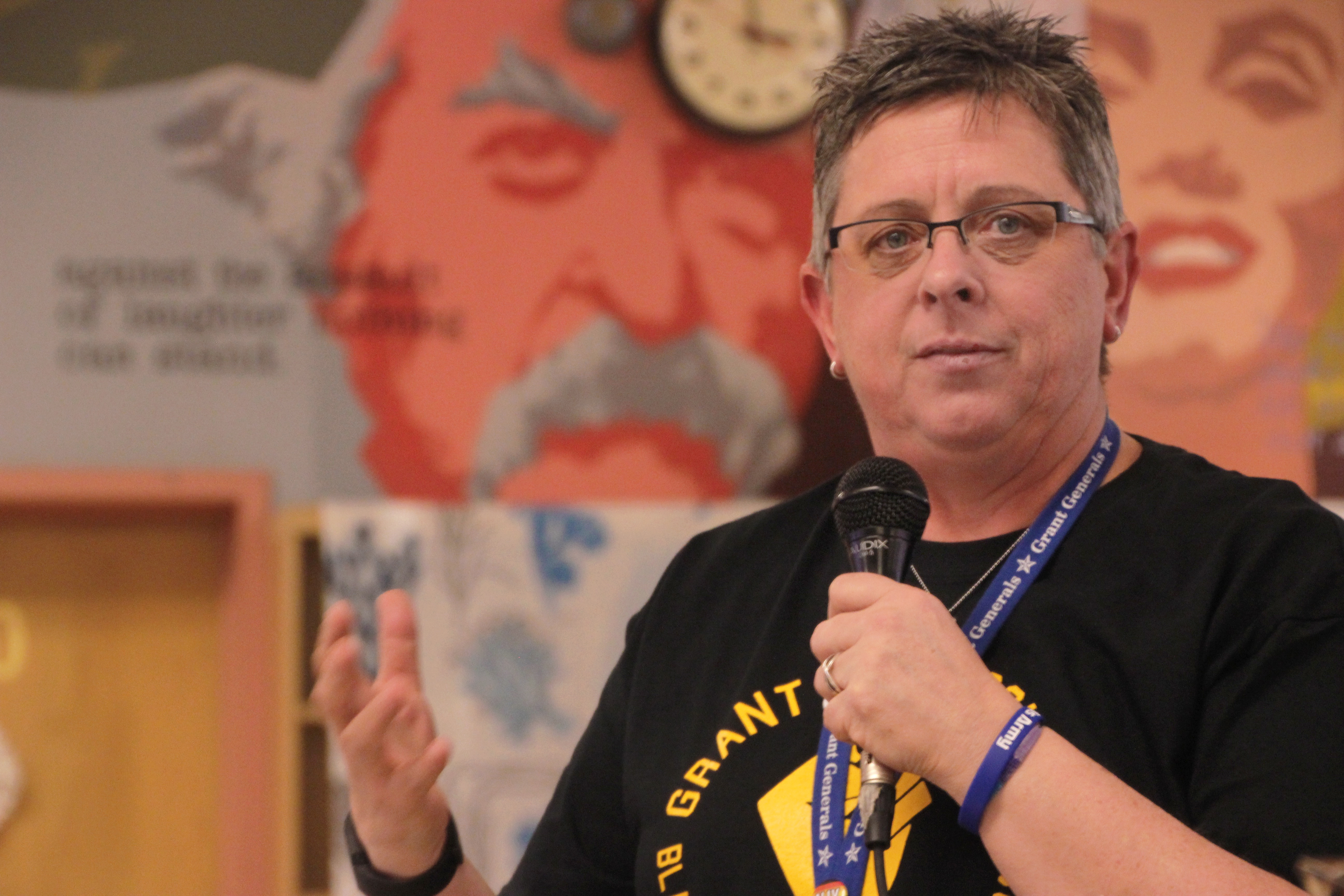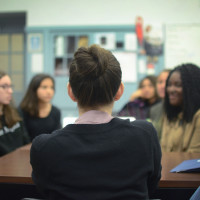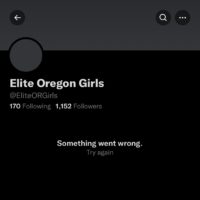Nine Grant High School students of color and the entire Grant faculty met for two hours earlier this week to discuss how race plays a factor in how teachers view students in the classroom.
The forum, part of a Portland Public Schools district-mandated equity training, allowed the students to discuss their experiences at Grant without interruption from teachers, who sat in an outer circle. The descriptions of what students of color say they face were not pretty.
In the 47-minute initial presentation, students addressed everything from a lack of representation of minorities in upper level classes to feeling isolated to thinking that teachers have lower expectations for students of color.
“They’re not complaining. They’re just saying, ‘Hey, when I come to school, this is my perspective,’ and I don’t think that most of our white students know that,” said Grant Principal Carol Campbell, who ordered all teachers and most staff to attend.
Following the student-only conversation, teachers broke off into groups to discuss the subject matter that the students brought to light and process ideas for a more inclusive classroom environment.
In the past, Grant’s track record addressing issues of race at school has been far from stellar. Last spring, when a group of freshman boys used social media to send each other racist slurs and discriminatory comments about women and gay people, administrators tried to keep things from most of the student body and from teachers.
But a second incident in early November – involving the boys’ soccer team and a player making racist remarks at a team dinner – pushed school administrators to move to increase the level of communication on race.
Vice Principal Diallo Lewis said he’s optimistic that there will be visible change as a result of the mandated meeting. Compared to previous efforts, this meeting – a collaboration between Grant’s equity team, the administration and students – was able to break down race in a way that hasn’t happened before.
“There is a lack of togetherness,” says counselor Tearale Triplett, a member of Grant’s equity team. “Sometimes, it seems like there might be two schools here within Grant.”
Inspired by a similar discussion held at Lincoln High School last year, English teacher and equity team member Courtney Palmer proposed the student-led dialogue during one of the Grant Equity Team’s monthly meetings.
Palmer was a student teacher at Lincoln when the school’s Black Student Union pitched the idea of a conversation. Administrators agreed.
“We had done a really good job talking about things as a staff, and assuming that we knew what the students were going through,” Palmer said, adding that teachers never really heard from those students what they were feeling.
“I think that the students voices are critical,” she said. “I thought it would be a good model where students didn’t have to feel as though they had to respond to questions from faculty, where the faculty would just sit and observe, and feel what they were going to feel.”
As faculty members filed into the mandatory meeting, the back rows filled up first. Many sat anxiously preparing notebooks or sending out last-minute texts. Shortly after everyone was seated, biology teacher Amy Lindahl opened up the event by asking the students to introduce themselves. Each student gave a short introduction before jumping right into the conversation.
As the students spoke, some faculty members appeared visibly uncomfortable. During discussion, some teachers remained bright red, while others fidgeted in their seats.
“I think I’m not as aware as I should be,” math teacher Gerald Young. “It was a good eye opener for me.”
Evan Harvey, president of Grant’s Black Student Union, said the discomfort was one of the reasons she wanted to have these discussions. “My main goal was to get the conversation started because it’s a hard conversation to have,” she said. “I really hope the teachers took it to heart, and…something changes so that it wasn’t just (going) in one ear out the other.”
While most teachers listened attentively, others graded papers and some tapped away at their phones. Afterwards, some teachers complained about their colleagues, saying they didn’t take the sessions seriously.
“I’m disappointed,” says Physics teacher Ethan Medley, who’s also a member of the equity team at Grant. “I know there was at least one person that was looking at her laptop in my field of view… There are some people that… disagree and they’re not going to change what they do and they’re not going to listen. But that hasn’t stopped Grant from changing or progressing or accomplishing things in the past and that won’t stop us now.”
Following a moment of introspective writing, groups of faculty members made posters outlining their moral and emotional responses to what the students had to say. Some came up with ideas on how to improve their classrooms, while others focused more broadly on how to make classes more welcoming.
Restorative Justice Coordinator Marty Williams, though, was proud of the students for speaking out. “It’s about having a voice,” he said. “Getting those ideas out even if they might not agree.”
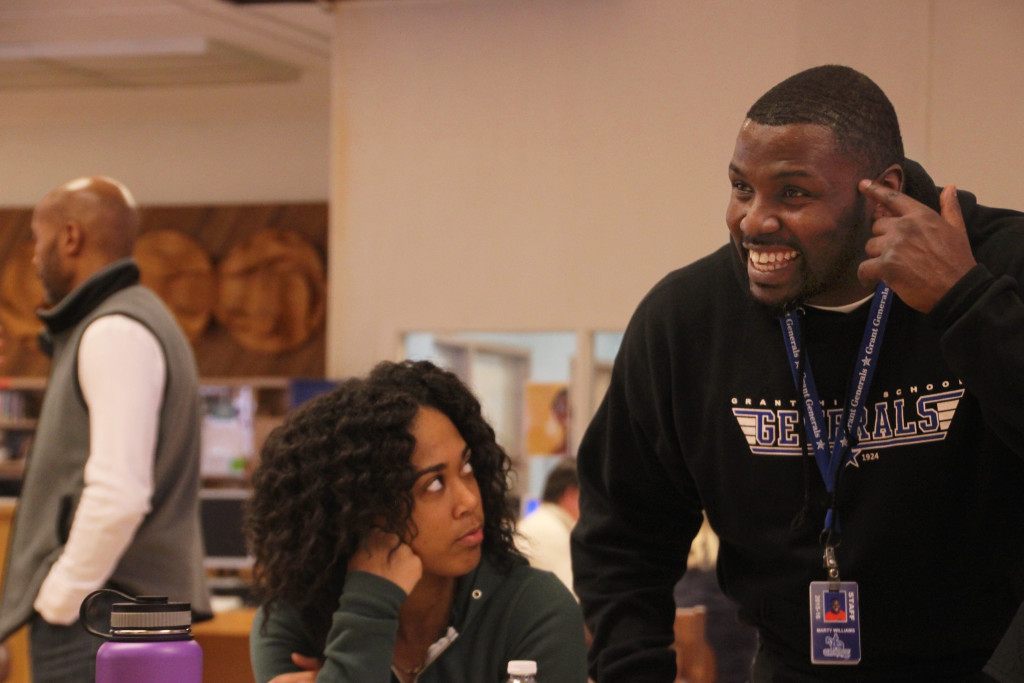
As the meeting ended, most teachers rushed out to get back to classrooms or to leave, but a few stayed to reflect on what they heard. English teacher Lukas Sherman said he plans to re-examine his curriculum and study more non-white authors to help foster community building and discussion.
“The change has to come from below,” he said. “I think if enough individual teachers start to change and work with students to change the culture and change the climate, then I think that can happen. Hopefully, teachers will be inspired enough to work with students and create a community within the school.”
Many teachers shared that sentiment.
“I wanted more,” said English teacher Dylan Leeman. “I felt like it opened the door on some important conversations that we still need to have and it touched on some subjects that we can go deeper into.”
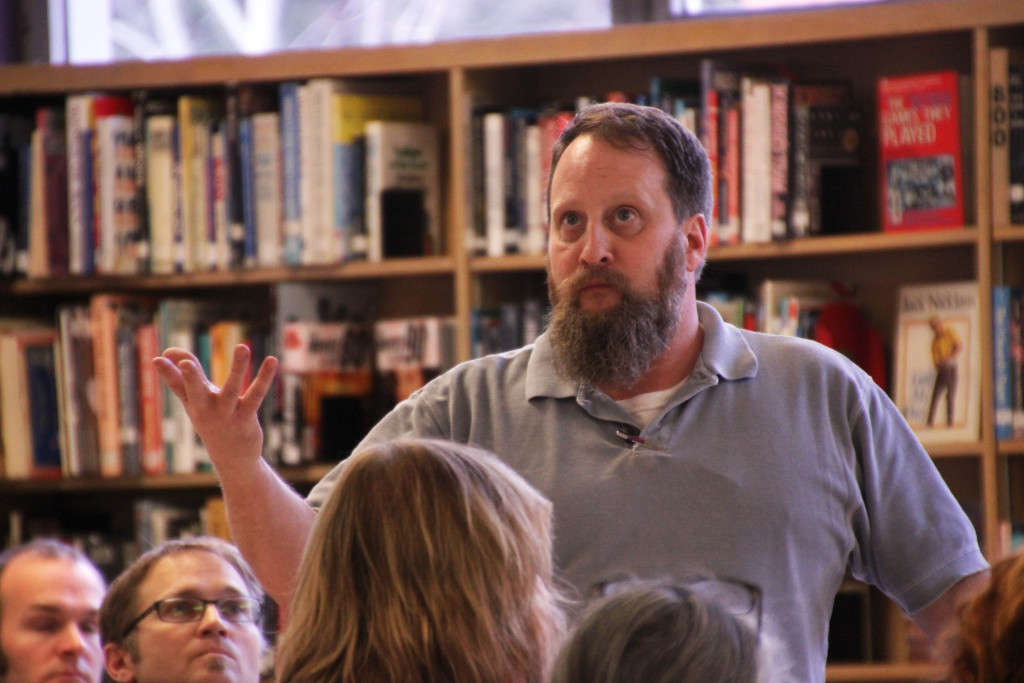
Administrators are planning to do just that. Using this forum as a jumping-off point, a school-wide discussion mirroring the equity event is planned for March.
“I hope that this is the beginning of more conversations to come and that it inspires teachers to include the information from this in their curriculum planning,” said Campbell. “It would be nice to have a collective vision about issues around race and culture in our curriculum and our school, school-wide…We can really shift the culture here if there is more sharing of multiple perspectives and multiple experiences.”

